Top speed 350 km/h Length 17 m Manufacturer SIAI-Marchetti | Wingspan 24 m First flight 1934 | |
 | ||
Savoia marchetti s 73 in sabena and east africa
The Savoia-Marchetti S.73 was an Italian three-engine airliner that flew in the 1930s and early 1940s. The aircraft entered service in March 1935 with a production run of 48 aircraft. Four were exported to Belgium for SABENA, while seven others were produced by SABCA. The main customer was the Italian airline Ala Littoria.
Contents
- Savoia marchetti s 73 in sabena and east africa
- Design and development
- Operational history
- Accidents and incidents
- Civil operators
- Military operators
- Specifications S73
- References
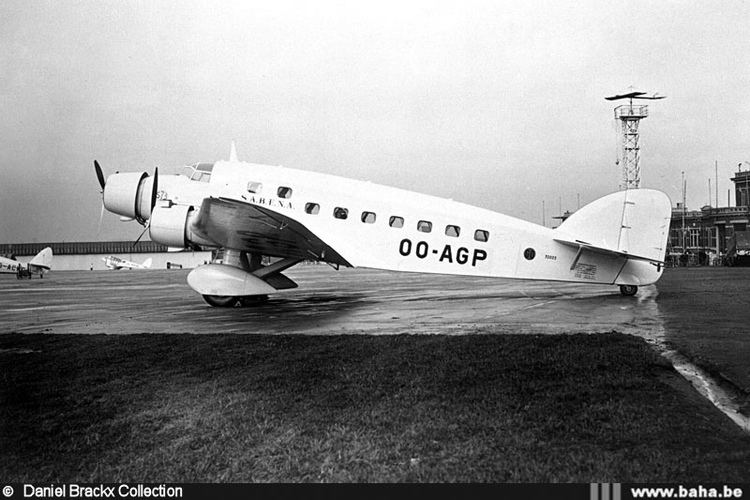
Design and development
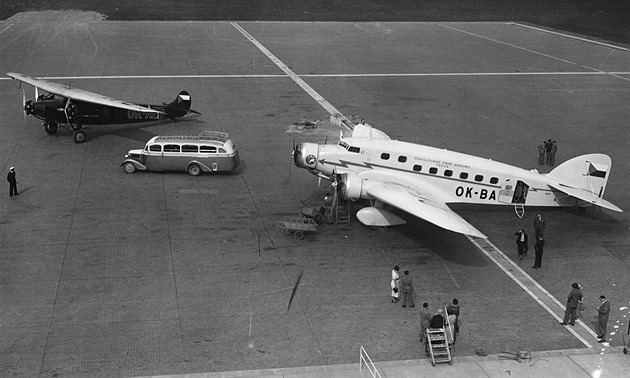
The aircraft was developed in only four months, thanks to the use of the S.55 wing, combined with a much more conventional fuselage. Developed in parallel with a bomber version (the SM.81 Pipistrello) the prototype S.73 first flew on 4 July 1934 from Cameri, with Adriano Bacula as test pilot.
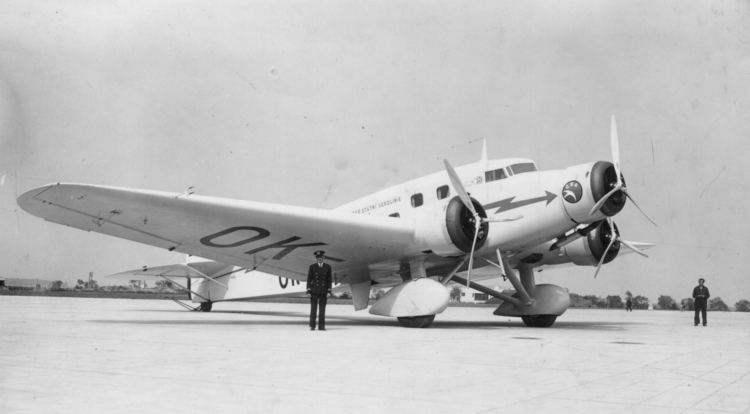
The prototype had a four-blade wooden propeller on the central engine, and two-blade wooden propellers on each wing engine. Later all aircraft were fitted with three-blade metal propellers.
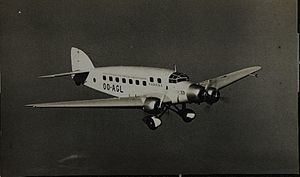
The S.73 was a mixed-construction (a skeleton of steel covered by wood and fabric for the fuselage, wood for the three-spar wing) monoplane with a braced tailplane and fixed undercarriage. There were two generators, one in each side of the fuselage; the batteries were 24 V and were rated at 90 A.

The pilot and co-pilot were seated side-by-side in an enclosed cockpit, with a compartment for a radio operator and a mechanic. A passenger compartment could house 18 passengers in two rows.
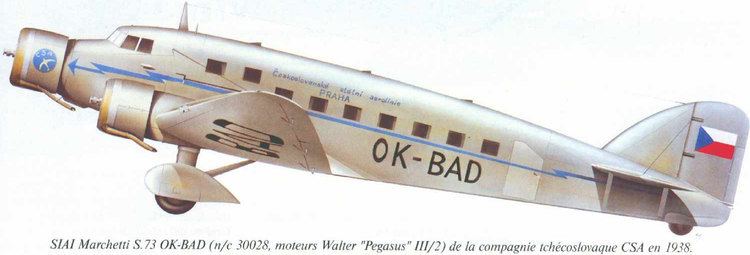
It had eight metallic fuel tanks, all in the wings, with a total capacity of 3,950 l (1,040 US gal; 870 imp gal). The prototype had French Gnome-Rhône 9Kfr Mistral engines, but further aircraft had 522 kW (700 hp) Piaggio Stella P.X, 574 kW (770 hp) Wright R-1820, 544 kW (730 hp) Walter Pegasus III MR2V, Alfa Romeo 125 or Alfa Romeo 126, driving ground adjustable, three-bladed, aluminium-steel propellers.
It could be used from small airports, had reliable handling and was not too costly. With the 574 kW (770 hp)Wright R-1820 engine the S.73 had cruise/max speeds of 270 / 340 km/h (150 / 180 kn; 170 / 210 mph), 1,000 km (620 mi) range, and 6,300 m (20,700 ft) ceiling. Interestingly, with the 544 kW (730 hp) AR.126 the S.73 had a maximum speed of 345 km/h (186 kn; 214 mph), 1,000 km (620 mi) range, and 7,000 m (23,000 ft) ceiling. The SABCA license-produced aircraft had 671 kW (900 hp) Gnome-Rhône 14K Mistral Major engines for a total of 2,013 kW (2,699 hp), comparable to the last models of S.79s or the CANT Z.1018.
The S.73 had an unremarkable flight test programme with few modifications recommended by the Regia Aeronautica. It was easy to fly, rugged, and easy to operate on the ground, including the ability to fly from short airfields in treacherous terrain, in spite of being under-powered and the lack of leading edge slats. Its mixed construction and fixed landing gear were its main shortcomings, when contemporary aircraft in the USA and Germany were of all-metal construction with retractable undercarriages. Some of these had better performance, but the S.73 remained competitive for some years.
Operational history
In December 1935, an S.73 was used for a journey from Italy to Asmara, delivering over 200,000 letters, with 6,600 km (4,100 mi) traveled in four days, followed by the return trip to Rome on 6 January 1936. A commercial line was established covering a 6,100 km (3,790 mi) journey. SABENA had a similar route to Congo, with four days and 44 flying hours. The S.73 flew in passenger service with airlines such as SABENA, Ala Littoria, Czechoslovak Airlines and Avio Linee Italiane.
At the outbreak of World War II the aircraft was already obsolete, but some of the aircraft were pressed into service with the Regia Aeronautica for operations in Abyssinia and Spain. Five S.73s were present in Eastern Africa and used as military transports.
Owing to the poor military situation, with British Commonwealth forces on the brink of capturing Addis Ababa, the Duke of Aosta, the Viceroy of Italian East Africa, ordered the remaining three S.73s to be evacuated. After several days of preparation, they took off from Addis Ababa on 3 April 1941 with 36 men on board, planning to fly to Kufra in Libya, 2,500 km (1,600 mi) away, requiring additional fuel tanks in the fuselage. All three aircraft force-landed in the desert, but refuelled at Jeddah, before resuming their journey.
After several days of difficulties, including sand storms that clogged up the air filters, they took off again. Initially, it was planned to make another landing in Beirut but in the meantime Erwin Rommel had conquered Benghazi, so this was the final destination of the three aircraft. Two aircraft, after 10 hours of flying and the men inside almost killed by fumes of the fuel auxiliary tanks, landed at Benghazi, after 4,500 km (2,800 mi) and over a month of travel.
Seven Belgian S.73s were flown to the United Kingdom in May 1940 and were pressed into service by the Royal Air Force. The RAF examples were used in North Africa where four later served with the Regia Aeronautica. Some Italian aircraft were pressed into military service in East Africa while those still in Italy were used to equip 605 and 606 Squadriglie. Four S.73s survived until the 1943 armistice, three being used by the Allies and one by the pro-Axis government; all had been taken out of service by the end of the war.
Accidents and incidents
S.73 OO-AGN of SABENA crashed at Tatsfield, Surrey, United Kingdom with the loss of all eleven on board.
Civil operators
Military operators
Specifications (S.73)
Data from Italian Civil and Military aircraft 1930–1945
General characteristics
Performance
